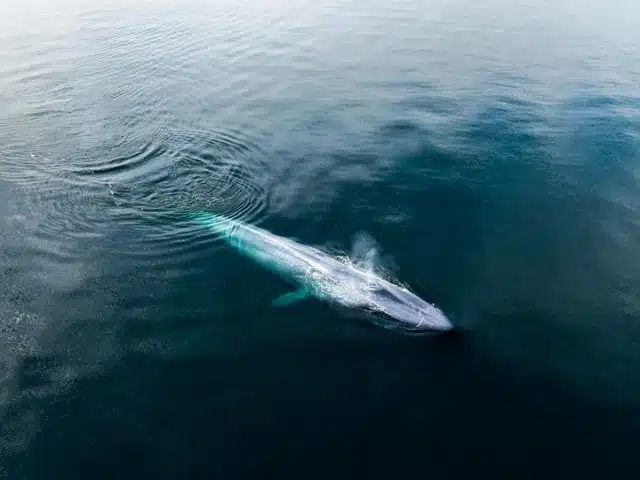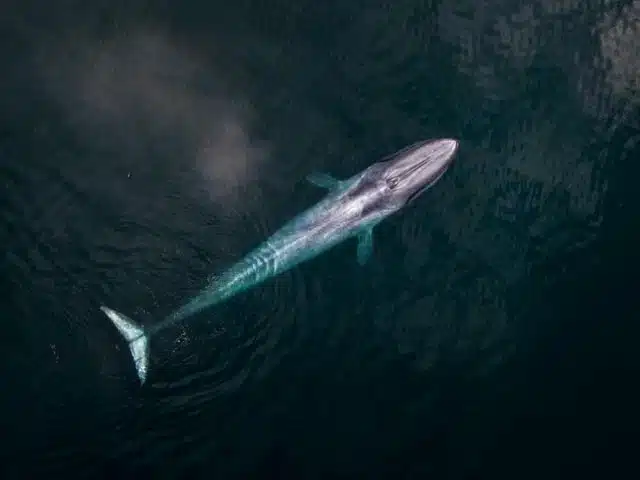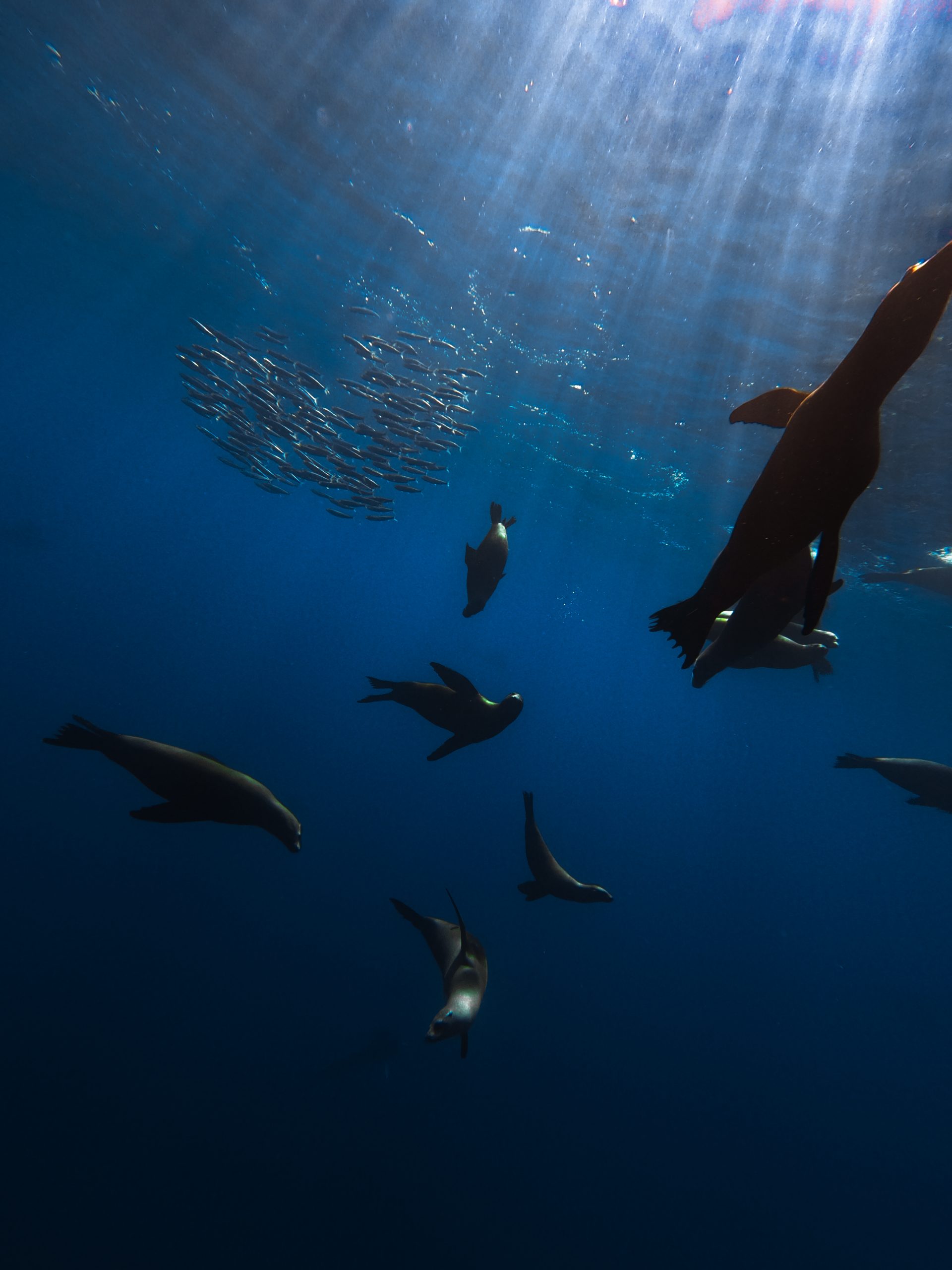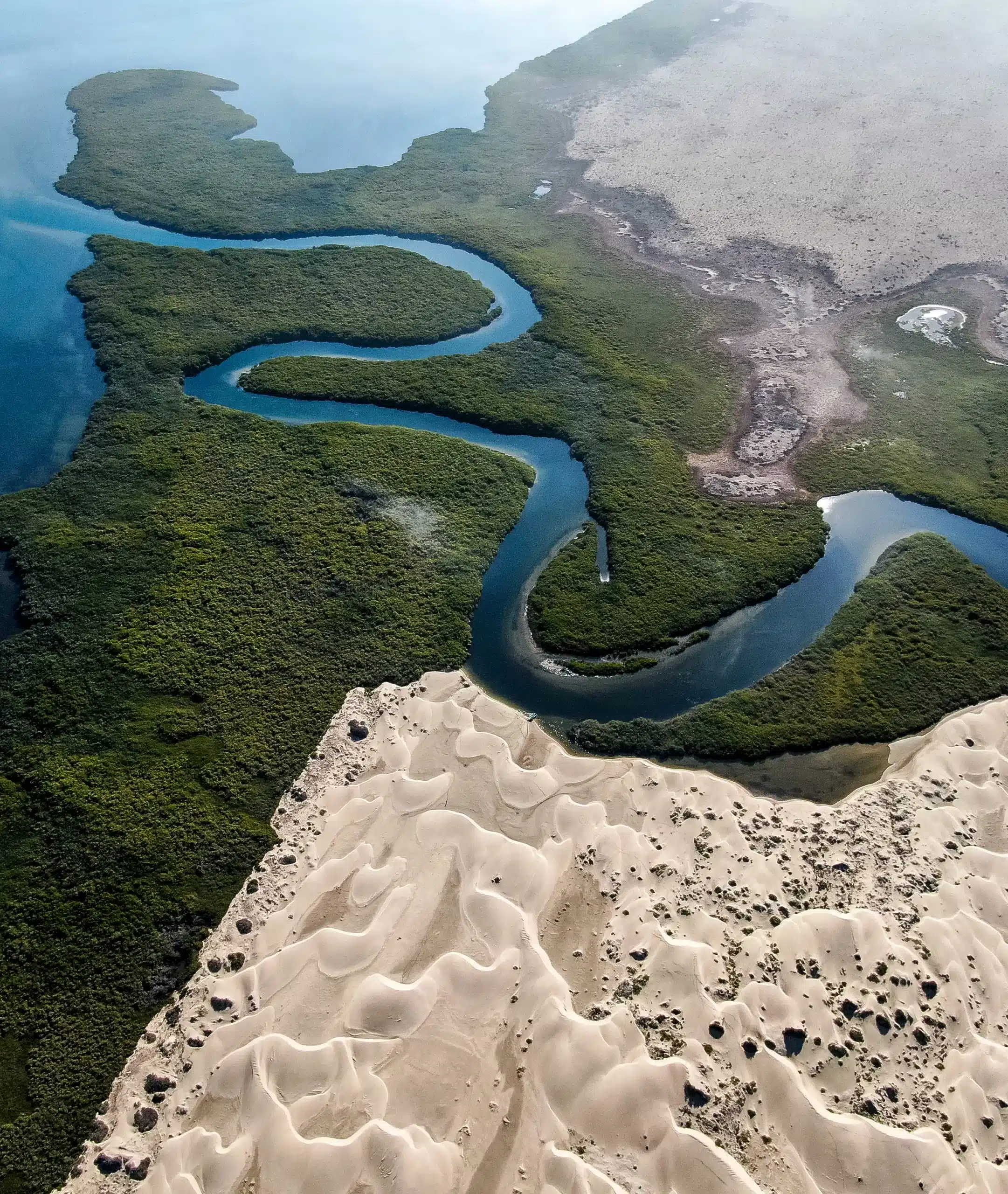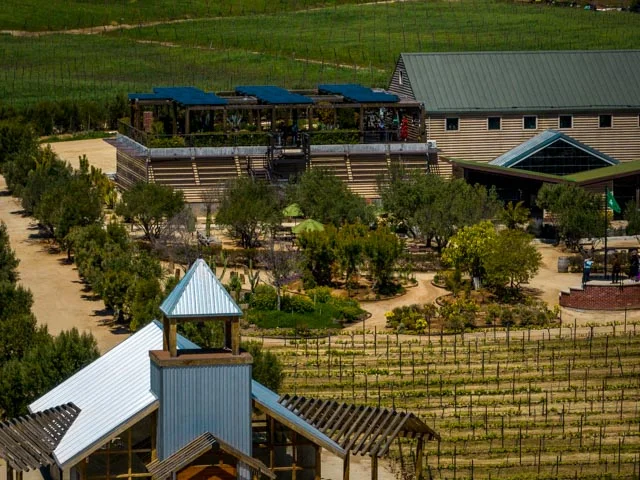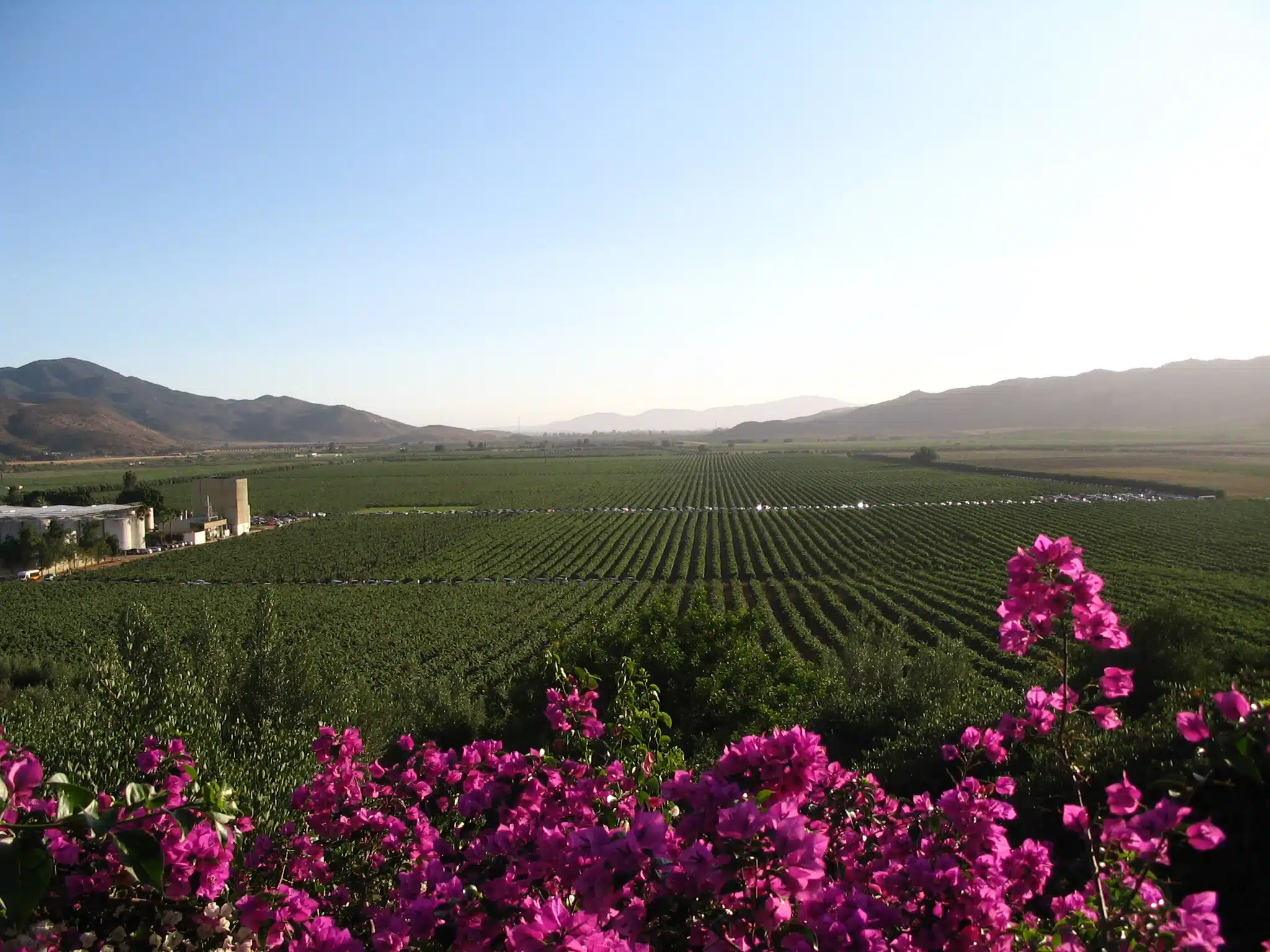Cabo San Lucas and the Sea of Cortez are among the world’s premier whale-watching destinations, attracting over one-third of the world’s whale species during winter. Different types of whales in Cabo like humpback whales, gray whales, blue whales, sperm whales, and orcas migrate from the Arctic to the warm waters of Baja California Sur to breed, give birth, and nurse their young.
For an up-close encounter, a private or small-group whale-watching excursion provides expert insights into whale behaviors and migration patterns, ensuring an unforgettable experience in one of the most biodiverse marine environments on the planet.
TYPES OF WHALES IN CABO:
HUMPBACK WHALES: THE ACROBATS OF THE SEA
Humpback whales are one of the most frequently spotted species in Cabo, famous for their spectacular breaches, tail slaps, and haunting songs that travel for miles underwater. These whales migrate over 6,000 miles annually from Alaska to Baja, where they mate and give birth.
During the season, visitors can witness dramatic “heat runs”, where multiple males compete for a female, showcasing powerful displays of strength and agility. If you’re lucky, you may even spot a mother teaching her calf how to breach during a whale-watching tour.
Best place to see them: Pacific coastline and the Sea of Cortez
Best time: December to April (Peak: February & March)
Want to learn more? Read our article: Humpback Whales Fun Facts: Surprising Things You Didn’t Know About These Gentle Giants
GRAY WHALES: THE FRIENDLY MIGRATORS
Known for their 10,000-mile migration, gray whales travel from the Arctic to Baja’s protected coastal waters, where they are uniquely known for seeking human interaction. Once hunted to near extinction and called “Devil’s Fish” for their aggression, they are now known as “ballenas amigas” (friendly whales).
Where to See Gray Whales in Baja
Gray whales primarily gather in three UNESCO-recognized lagoons, each offering unique experiences:
-
Magdalena Bay – A vast lagoon with rich biodiversity and mangrove forests, making it a prime eco-tourism site.
-
San Ignacio Lagoon – The smallest of the three, providing up-close interactions as whales frequently approach boats.
-
Ojo de Liebre Lagoon – One of the largest nurseries for gray whales, with record-breaking populations. In 2012, over 2,700 whales were registered here.
Best place to see them: Ojo de Liebre Lagoon
Best time: January to March
Want to learn more? Read our article: Fun Facts About Gray Whales: Discover the Secrets of the Friendliest Whales in the Ocean
BLUE WHALES: THE LARGEST ANIMALS ON EARTH
The elusive blue whale holds the title as the largest animal to have ever lived, reaching up to 100 feet in length and weighing nearly 200 tons. Despite their size, they are graceful swimmers and can hold their breath for up to 20 minutes before resurfacing.
The Sea of Cortez, particularly Loreto, is one of the few places in the world where blue whales reliably return each winter, offering an unmatched opportunity to witness these gentle giants.
Best place to see them: Loreto, Sea of Cortez
Best time: January to March
Want to learn more? Read our article: Blue Whales Interesting Facts: The Loudest, Biggest, and Most Elusive Giant of the Ocean
SPERM WHALES: THE DEEP DIVERS
Sperm whales are the deepest-diving whales, capable of plunging over 3,000 feet in search of their favorite prey—giant squid. es.They travel in matriarchal pods, with females and calves forming strong social groups, while males lead more solitary liv
Their clicking vocalizations are among the loudest sounds produced by any animal, serving as an advanced communication system rivaling human complexity. Sightings of sperm whales are more elusive but occur year-round in Baja’s deep canyons, particularly around La Ventana and Santa Rosalía.
Best place to see them: Deep waters near La Ventana & Santa Rosalía
Best time: Year-round (More common in winter)
Want to learn more? Read our article: Fun Facts About Sperm Whales: The Deep-Sea Hunters with the Largest Brain on Earth
ORCAS: THE OCEAN’S TOP PREDATORS
Orcas are a familiar presence in the waters of Baja California Sur, particularly in the Sea of Cortez. They’re most frequently spotted during the spring and summer months when they hunt mobula rays, and during the winter as they target whales.
As apex predators, orcas are known for their intelligence and highly coordinated hunting techniques. Traveling in tight-knit family pods, they use complex vocalizations to communicate and work together to capture prey.
Best place to see them: Sea of Cortez
Best time: Year-round — they don’t have a specific season
Want to learn more? Read our article: Fun Facts About Orcas: Secrets of the Ocean’s Most Powerful Predator
BOOK YOUR WHALE-WATCHING ADVENTURE TODAY
Witnessing whales in Cabo San Lucas is a once-in-a-lifetime experience. Whether you’re captivated by the playful breaches of humpbacks, the gentle interactions of gray whales, or the rare sight of an orca pod, IN CABO TRAVEL offers exclusive tours designed to make the most of your marine adventure.
BOOK NOW and experience the magic of Baja’s marine giants firsthand.






